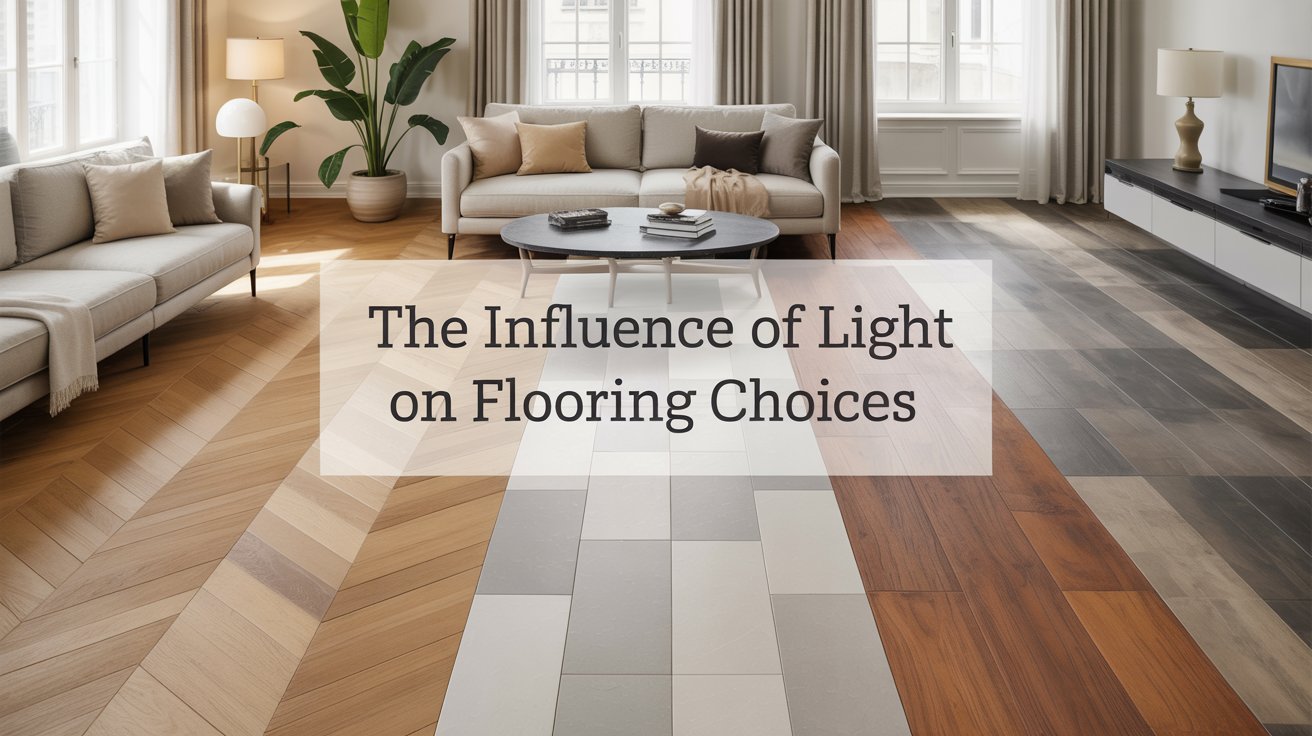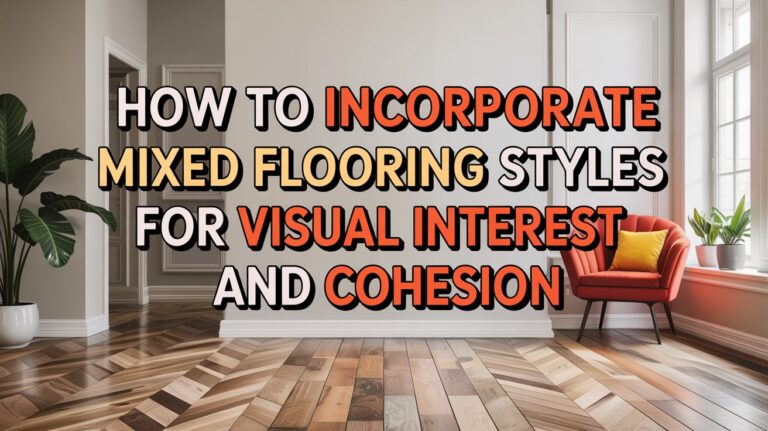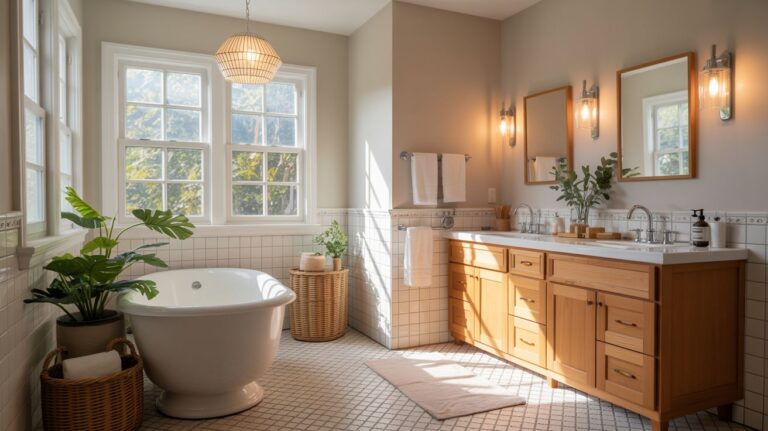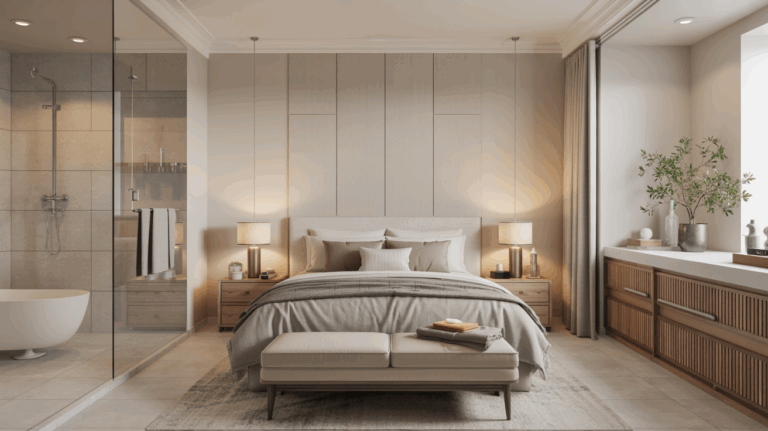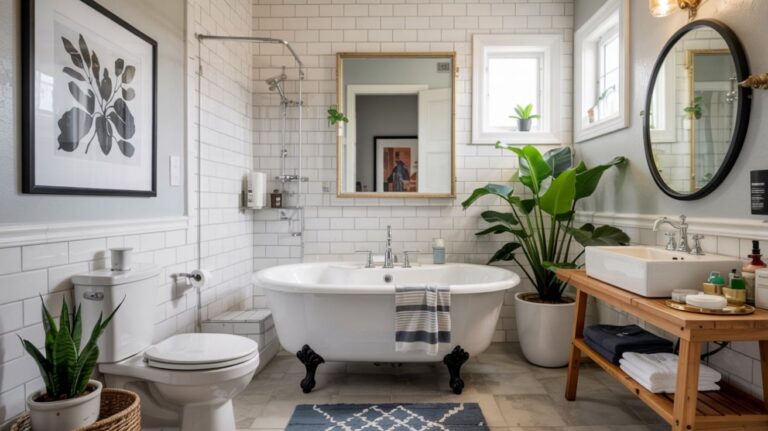The Influence of Light on Flooring Choices: Enhancing or Diminishing Spaces
I have been, or can be if you click on a link and make a purchase, compensated via a cash payment, gift, or something else of value for writing this post. As an Amazon Associate, I earn from qualifying purchases. Please read my full Affiliate Disclosure for more information.
You’ll shape space with light, because how illumination meets texture and color turns flooring from backdrop into a defining material. Light and color perception guide your choices: brightness constrains texture and scale, while direction reveals depth and imperfections. Different finishes respond to shifting light, so seek consistent tone from entry to far wall. Layered, high-CRI lighting enhances true floor tone without glare, with dimmers for mood shifts. Continue to explore how clever lighting elevates floor design.
Key Takeaways
- Light color temperature shifts floor undertones, influencing harmony with architecture and overall mood of the space.
- Brightness level affects texture readability, perceived space size, and the suitability of darker vs. lighter flooring.
- Light direction highlights finishes and can reveal flaws or patina, guiding durable, reliable finish choices.
- Layered lighting (ambient, task, accent) enhances grain, pattern, and warmth without glare on glossy floors.
- Consistent color and finish responses under varying light ensure long-term visual coherence across rooms.
Understanding Light and Color Perception in Flooring
Lighting and color perception shape how flooring reads in a space. You evaluate how natural shadows interact with surface texture and pigment, shaping apparent depth and warmth. Color temperature guides your readings of undertones, influencing whether a floor feels cool or intimate. You’ll notice lighter floors reflect ambient light, subtly enlarging a room, while darker tones absorb it, anchoring the space. Consider the direction of daylight and artificial sources, since white, neutral, or amber cues shift instant perception. By aligning color temperature with architectural intent, you achieve legibility, harmony, and purposeful material expression in flooring choices.
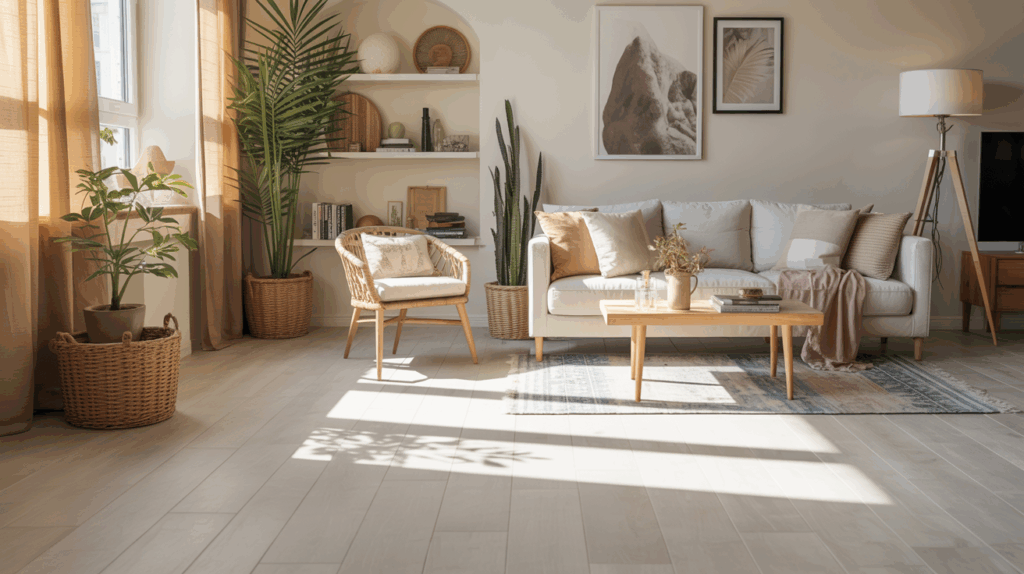
How Brightness Shapes Material Choices
Brightness acts as a governing constraint in material selection: it governs how textures read, how scale is perceived, and how atmospheres are felt. You discover that brightness alters material behavior, guiding your choices toward clarity or softness, durability or tactility, depending on light quality. Natural sunlight emphasizes grain and translucency, while artificial lighting shifts color warmth and contrast. You’ll balance reflectivity with immersion, ensuring readability of details without glare. The goal is material harmony across spaces, where brightness informs both function and mood.
- Texture and finish response under varying light
- Color integrity under natural sunlight vs artificial lighting
- Reflectivity management for comfortable ambient balance
The Impact of Light Direction on Surface Finish
Light direction plays a pivotal role in how surface finishes read and age. As light travels across floors, grain alignments, sheen, and microtexture respond, revealing or concealing imperfection. You’ll notice that oblique lighting enhances depth, emphasizing subtle veining or matte contrasts, while direct beams can wash color and exaggerate flaws. To balance perception, consider finish choices that accommodate directional shifts, ensuring consistent tone from entry to far wall. Shadow play adds perceived depth without overpowering color, and glare management reduces hot spots that distort texture. Understanding these dynamics helps you select finishes with durable, aesthetically reliable performance.
Finish and Texture Under Different Lighting Conditions
Surface texture reads differently as lighting shifts, so you’ll need finishes that respond consistently across angles and distances. In practice, you’ll compare how color contrast and gloss levels pair with matte, satin, and high-gloss surfaces under varying light temperatures and intensities.
- Color contrast sketches form differently with each finish
- Gloss levels influence perceived depth and texture
- Consistency across angles ensures reliable evaluation
You’ll prefer finishes that minimize hot spots, preserve detail, and align with space intent. A disciplined approach balances glare control, tactile texture, and visual harmony, guiding selection toward predictable performance rather than fleeting illumination.
Practical Lighting Strategies to Elevate Floor Design
Strategic lighting can dramatically elevate floor design by sculpting texture, color warmth, and spatial perception without overpowering the material itself. You’ll balance natural light and artificial lighting to reveal grain, patina, and pattern while maintaining subtle contrast. Use layered sources: ambient general light, task accents, and focused uplights to accent edges and seams. Consider color rendering, aiming CRI 90+ for true floor tones, and calibrate intensity to avoid glare on glossy finishes. Dimmer controls enable flexible mood shifts, while daylight-aware placement minimizes shadows during peak sun. Optimize placement relative to windows, skylights, and reflective surfaces for cohesive, dynamic floors.
Conclusion
Informed by luminance and direction, your flooring choice becomes a calibrated aesthetic—an intersection of science and style. When light is bright, light-toned finishes reveal texture and purity; in dim or angled lighting, richer grains and matte sheens read as warmth and depth. Consider how surface finish shifts with intensity, glare, and shadows, and plan layers of artificial and natural light accordingly. With disciplined material selection and strategic placement, light elevates space without compromising function.
